| Skip Navigation Links | |
| Exit Print View | |

|
Sun Fire X2270 M2 Server Installation Guide |
About This Documentation (PDF and HTML)
Download Server System Tools and Drivers
Sun Fire X2270 M2 Server Installation Guide
Installation Overview and Preparation
Safety and Compliance Information
External Features and Components
Installing the Server Into a Rack With Optional Slide Rails
Optional Slide Rail Compatibility
How to Disassemble the Slide Rails Before Installation
How to Install the Mounting Brackets on the Server
How to Attach the Slide Rail Assemblies to the Rack
How to Install the Server Into the Slide Rail Assemblies
How to Verify the Operation of the Slide Rails
How to Remove the Server from the Rack
About Server Management Tool Options
Communicating With the ILOM and the System Console
Connecting Cables and Powering On to Standby-Power Mode
ILOM SP IP Address and the ILOM Interfaces
Connecting to the System Console
How to Connect to the System Console Locally (Physical Console)
How to Connect to the Serial Console Using the ILOM Command-Line Interface
Setting Up Platform Operating System and Driver Software
Configuring the Factory--Installed Oracle Solaris 10 Operating System
The Oracle Solaris OS Installation Worksheet
Configuring the Factory-Installed Oracle Solaris 10 Operating System
Updating Supplemental Drivers and Firmware
Getting Started on the Oracle Solaris OS
Powering On and Powering Off the Server
Note - The screen shots presented in this topic are for informational purposes only and might differ slightly from the screens you see.
Before You Begin
These are the requirements for the JavaRConsole (remote console):
Oracle Solaris OS, Linux, or Windows operating system is installed.
The system must be connected to a network that has access to the server Ethernet management port.
Java Runtime Environment (JRE) 1.5 or later is installed.
If the remote console system is running the Oracle Solaris OS, volume management must be disabled for the remote console to access the physical floppy and CD/DVD-ROM drives.
If the remote console system is running Windows, Internet Explorer Enhanced Security must be disabled.
The remote console system and ILOM service processor must be set up according to the instructions in the Oracle Integrated Lights Out Manager (ILOM) Web Interface Procedures Guide.

The Security Alert dialog box is displayed.
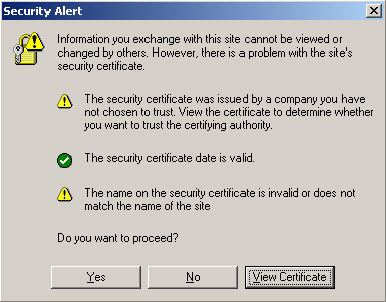
The ILOM login screen appears.
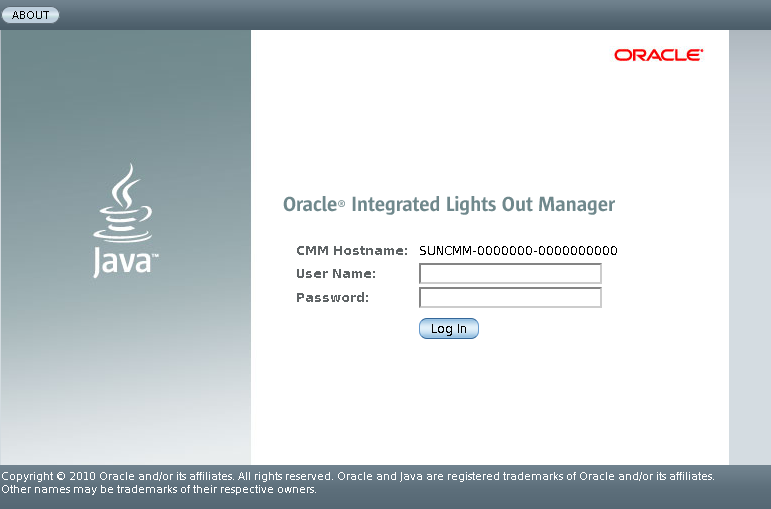
The default user name is root and default password is changeme.
The ILOM Version Information screen appears.
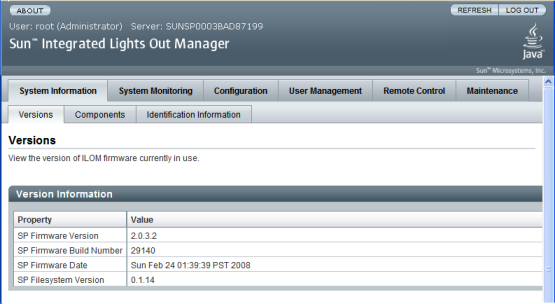
The Launch Redirection screen appears.
Note - Make sure that the mouse mode is set to Absolute mode in the Mouse Mode Settings tab.
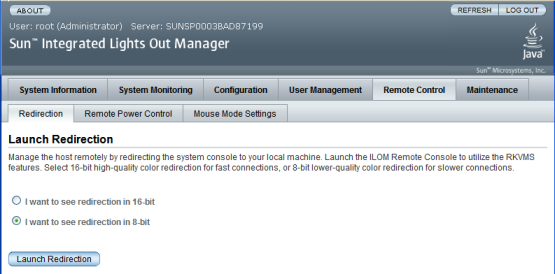
Note - When using a Windows system for remote console redirection, an additional warning appears after you click Launch Redirection. If the Hostname Mismatch dialog box is displayed, click the Yes button.
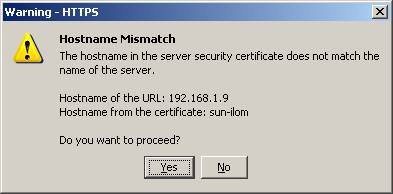
The Remote Control dialog box appears.

Note - You must have administrator privileges.
The default user name is root and default password is changeme.
The JavaRConsole screen appears.
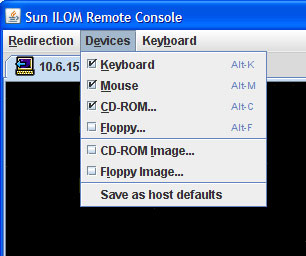
Remote Physical Floppy Disk: Select Floppy to redirect the server to the physical floppy drive attached to the remote console.
Remote Floppy Image: Select Floppy Image to redirect the server to the floppy image file located on the remote console.
Remote Physical CD/DVD: Select CD-ROM to redirect the server to the CD/DVD in the CD/DVD drive attached to the remote console.
Remote CD/DVD Image: Select CD-ROM Image to redirect the server to the .iso image file located on the remote console.
Note - Using the CD-ROM Remote or CD-ROM Image options to install software on your server significantly increases the time necessary to perform the installation because the content is accessed over the network. The installation duration depends on the network connectivity and traffic.